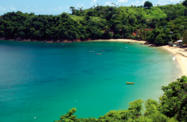Long neglected, tourism development has now become a priority for Trinidad and Tobago’s government as efforts to steer the economy away from a reliance on hydrocarbons gain pace.

T&T’s plans to strengthen the tourism sector’s long-term viability by investing in infrastructure and related facilities were outlined by Colm Imbert, the minister of finance, in September, when tabling the country’s 2017 budget.
Improvements to transport services and beach facilities will be a key focus, he said, together with the development of niche markets.
Shifting the focus
In his speech, Imbert acknowledged that successive administrations had failed to give tourism the attention it merited, concentrating instead on T&T’s oil and gas industry.
“The reality is that tourism is a sector in which we have a significant comparative advantage and, notwithstanding the looming presence of Cuba over Caribbean tourism, we need to intensify our efforts that make tourism an important driver of diversification,” he said.
The planned Sandals resort in Tobago and its anticipated impact on the economy – a major talking point for the industry in 2016 – also featured in Imbert’s budget speech. The project, which comprises two hotels, is slated to open within five years.
The resort is expected to provide direct employment to 2000 workers and purchase more than TT$100m ($14.8m) worth of local goods and services per year, according to the minister, while initial projections put its combined yearly contribution to the national economy at around TT$500m ($73.8m).
Speaking at a local awards ceremony in November, Adam Stewart, CEO of the hotel chain, commented on the anticipated economic benefits of the project.
“Consider the impact of what our guests consume in one year at a single resort, 750 rooms – about the size of what we are proposing here in T&T – 115,000 new, incremental customers or 15 full [Boeing] 737s every week,” he said.
Plans to boost capacity at Tobago’s ANR Robinson International Airport in Crown Point, on the south-west tip of the island, should also help feed the pipeline of visitors. In addition to a TT$44m ($6.5m) refurbishment, work is set to begin on a new international terminal in 2017 to accommodate an anticipated rise in arrivals.
Budget items
In his budget speech, Imbert said the government was keen to tap niche markets, such as the meetings, incentives, conferences and exhibitions segment, alongside ecotourism, as a means of broadening T&T’s appeal and boosting the industry’s revenue-generating capacity.
Projects include the construction of a large-scale hotel in Trinidad, upgrades to services at several of the island’s main beach areas and improvements to Port of Spain’s waterfront area.
While the measures outlined by Imbert appear largely positive for the tourism industry, the budget also included a number of steps that could prompt a less favourable response from operators.
A reduction in fuel subsidies has already pushed diesel and petrol prices up by 15%, while duty increases of 15% on tobacco and 20% on alcohol are also expected to have an impact on the tourism sector.
Prospects for expansion
Despite the duty hikes, the tourism investment pipeline should help drive growth across both the leisure and business components of the industry.
Accounting for 73.2% – or TT$8bn ($1.2bn) – of travel and tourism GDP in 2015, the leisure segment was on track to expand by 1.3% in 2016 and is forecast to grow by 2.7% per annum through to 2026, according to data from the World Travel & Tourism Council (WTTC).
Meanwhile, the business travel segment, which makes up the remaining 26.8% of the industry’s contribution to GDP and generated TT$2.93bn ($427.7m) in 2015, is also projected to expand. The WTTC expects the segment to finish the year up 1.2%, with 1.6% growth per annum forecast over the coming decade.
Speaking at a conference in October, Paula Gopee-Scoon, the minister of trade and industry, mentioned several of the initiatives in T&T’s tourism project pipeline.
“Some of these include the development of sites and facilities in Maracas, Las Cuevas, Manzanilla, Vessigny; the provision of specific incentives for hotels and guest rooms; infrastructure and amenities for cruise passengers; and very importantly, increased campaigns to build public education and awareness,” she said.
The regional tourism market is also being eyed as an avenue for growth. According to David Scowsill, president and CEO of the WTTC, T&T – together with other Caribbean countries – could do more to promote intra-regional travel, tapping in to largely unexplored opportunities for market growth closer to home.
Addressing a regional tourism conference in September, Scowsill said a move towards an open skies agreement, a reduction in aviation levies and incentives for firms to move into the regional travel niche would unleash “immense” potential.
“Once this happens, you will open the entire domestic travel and tourism market. That remains the single biggest opportunity for the domestic travel and tourism industry within the Caribbean,” he said.
Oxford Business Group is now on Instagram. Follow us here for news and stunning imagery from the more than 30 markets we cover.


